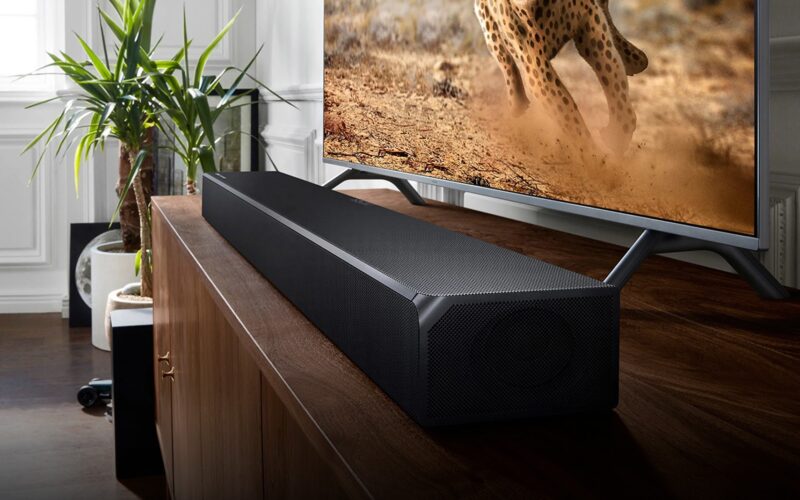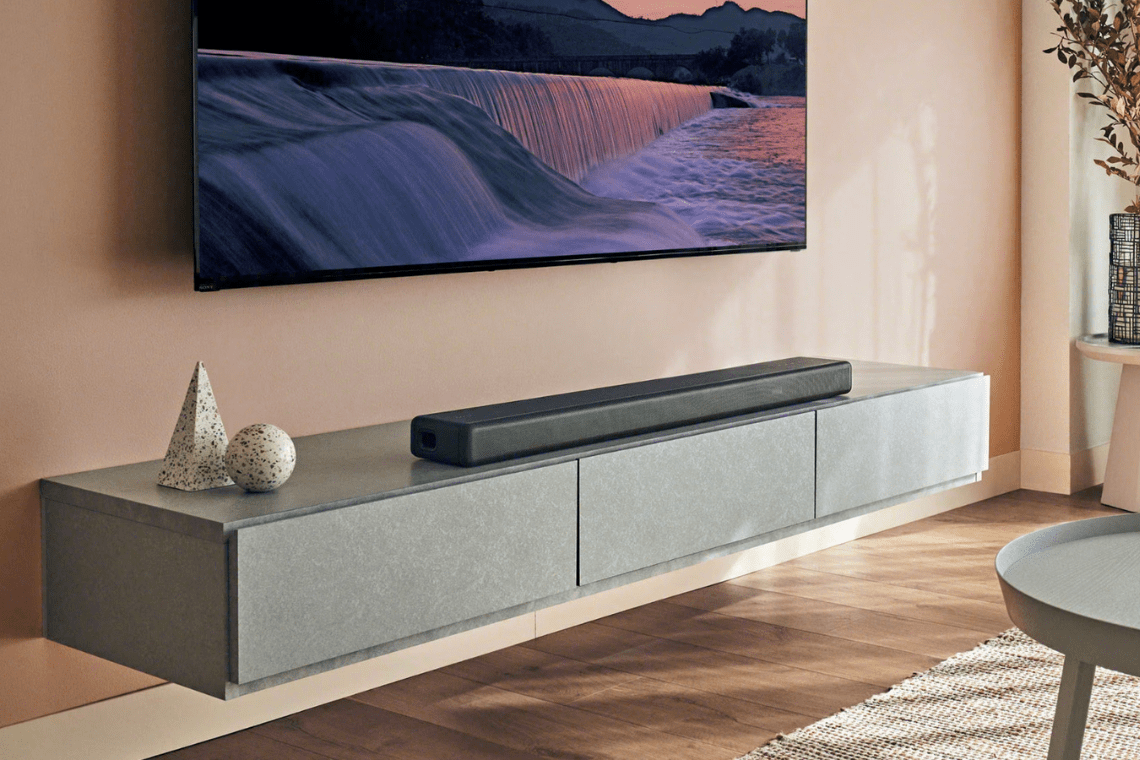Big, cinematic mixes are built for theaters, not living rooms. That’s why a whisper can vanish while an explosion rattles picture frames. You don’t need new speakers to turn chaos into clarity; you need a few calm choices that put dialogue where your ears expect it and keep energy in the soundtrack without swallowing speech. Start with the signal the TV or sound system receives, because the wrong track makes every adjustment harder. Then set levels and crossovers so midrange—the band where human voices live—floats above thumps and rumbles instead of competing with them. Aim the hardware at faces, not floors, and let small doses of dynamic control do the heavy lifting at night. Finally, quiet the room’s worst reflections so consonants stop smearing and you stop riding the volume. The result feels natural: conversations sound like people in your room, music has lift, and impact lands without the “grab the remote” reflex.
Choose the honest signal before you touch a setting

Clarity starts with the track you feed the TV or receiver. If you use only the TV’s speakers or a compact soundbar, a clean stereo or two-channel output often preserves dialogue better than an unhelpful downmix of a 5.1 track. In streaming apps, pick the plain language track when a “5.1” version sounds hollow or distant through small speakers; switch back to multichannel when you’re on a soundbar with a dedicated center or a full system. If you do have a soundbar or AVR, send bitstream audio so the device can decode and steer the center channel properly; if lip-sync drifts, try PCM and enable automatic lip-sync correction. Avoid “enhanced” modes that smear detail with reverb or widen voices beyond the screen; those make words bigger but less intelligible. When a mix is unusually quiet and explosive moments are too loud, enable a gentle night or “reduce loud sounds” mode on the player, not the whole TV; you’ll compress peaks without dulling the rest of your apps.
Raise voices without shrinking the world
Human speech lives mostly between about 1 and 4 kHz, with power in the 200–400 Hz region. You want that band forward enough to carry meaning while bass and effects keep weight and space. If you use an AVR, lift the center channel 2–4 dB above the left and right speakers and set its crossover around 80–120 Hz depending on the speaker’s size; small centers benefit from a higher crossover so they don’t waste effort trying to play deep notes. On a soundbar, enable “dialogue” or “voice” enhancement at a low setting and increase only until words feel anchored; if the mode adds hiss or edge, back off and use a tiny EQ bump in the 2 kHz range instead. Keep the subwoofer honest by trimming it a touch when voices feel masked; strong bass is fun, but too much in the 60–120 Hz band muddies vowels and turns consonants into mush. Save your changes as presets—one for film, one for late night—so you stop fiddling every time a different app loads.
Aim sound at faces and keep the center tied to the screen
Placement decides whether dialogue sounds like it comes from mouths or from furniture. If you rely on a soundbar, center it under the screen and tilt it so the drivers aim at ear height where you sit, not at your knees. Avoid burying it in a cabinet; the front needs open air to project consonants clearly. For a center speaker, put it as close to the screen’s vertical middle as your setup allows and angle it toward your seating position. When the speaker must sit low, a few degrees of upward tilt can be the difference between crisp and muffled. If you run left and right speakers without a physical center, keep them symmetrical and roughly at ear height; a “phantom” center forms when levels match and angles are even, and voices snap to the middle. Resist virtual surround settings that pull speech outside the screen; wide can be exciting for music, but conversation should feel like it lives on the image, not the walls.
Use dynamic controls as a scalpel, not a sledgehammer
Dynamic range compression exists for living rooms. The trick is using it lightly so the soundtrack still breathes. Night or late-evening modes should shave peaks and lift whispers just enough that you don’t ride the remote between talk and effects. If your gear exposes dynamic range settings for Dolby content, pick a middle option that favors intelligibility without flattening crescendos; “auto” often tracks scene changes more gracefully than a fixed heavy clamp. Some systems offer “dialogue lift” or “center spread.” Lift nudges voice upward in the soundstage to match a wall-mounted TV; use it sparingly so it doesn’t thin voices. Spread can widen the center for bigger rooms; disable it if words lose focus. If your receiver includes a “loudness” or “dynamic EQ” feature for low volumes, leave it on at night when you listen quietly; it preserves midrange and light bass so you can keep the master lower without losing clarity. The guiding idea is restraint: a nudge that keeps sentences steady beats a blanket that makes everything the same size.
Calm the room so consonants stop smearing
Rooms shape speech as much as speakers do. Hard, parallel surfaces send reflections that arrive a split-second after the original sound, blurring the edges of words. A soft rug between you and the screen, curtains over bare glass, and books or textured decor on the side walls near ear height tame those early reflections without turning your room into a studio. Coffee tables with glass tops bounce sibilants straight at you; a runner or fabric mat takes the sting out. If your soundbar fires upward for height effects, a low, reflective ceiling can make shouts more than whispers; a gentle reduction of the height level or a switch to a non-height mode during talk-heavy shows keeps focus on the script. Distance matters too. Sitting one step closer to the screen and speakers raises the speech-to-room ratio without raising the volume. The goal is simple: less echo in the first few milliseconds so consonants arrive clean and your brain does less guesswork.
Tune by ear with two familiar scenes and then stop tweaking
A quick, repeatable check saves you from endless adjustments. Use one dialogue-heavy scene with overlapping voices and one scene where quiet speech sits over a busy background—rain, traffic, or a score with snare and strings. Start with your “daytime” preset and set master volume at a comfortable baseline where speech feels present. If sibilants are sharp or fatiguing, reduce any “clear voice” enhancement one notch and trim a touch around the 4–6 kHz region; if words sound woolly, add a tiny lift near 2 kHz and reduce sub level slightly. Switch to your “late night” preset and engage the gentle compression you picked earlier; confirm whispers rise without cymbals pumping or room tone breathing. Finally, play a scene with a big hit—thunder, a door slam, an epic bass swell—and make sure the effect still moves you without drowning a line that follows. When both scenes pass, save and consider the job done. The secret to living with a great mix is a pair of presets you trust so you can forget the menu and watch.
Keep the signal chain tidy so lip-sync and tone don’t drift

Clarity evaporates when devices fight. If you use external sources, standardize them to the same output format so the TV or AVR isn’t re-decoding every time you switch apps. Enable automatic lip-sync if your gear supports it and nudge manually only if voices clearly lag or lead lips; big corrections usually signal a mis-set option upstream. Match relative volumes across inputs once so news, games, and streaming don’t leap or shrink when you change sources. On smart TVs, disable any “virtualizer” that conflicts with a soundbar’s own processing; doubling effects blurs everything. And when you update firmware, check that your presets remain selected; some devices revert to a default mode that favors spectacle over speech. A calm chain is boring by design. The fewer surprises between the app and your ears, the easier it is to keep dialogue front and center without policing every scene change.

